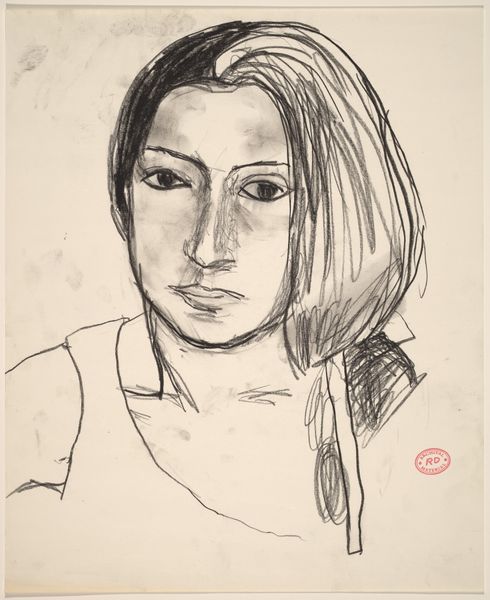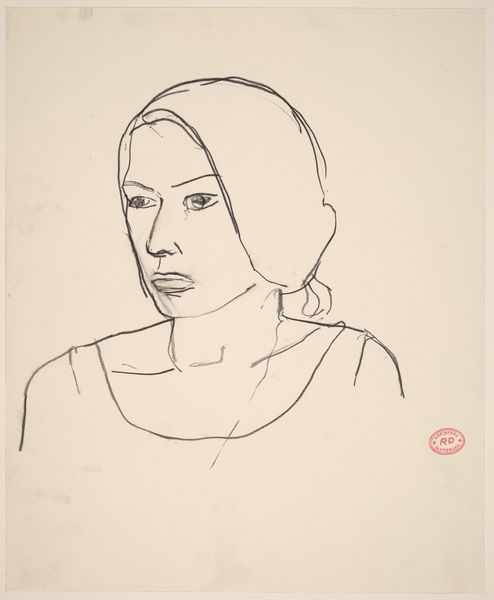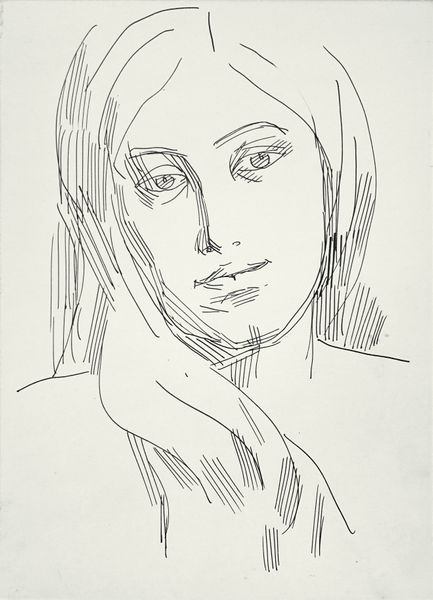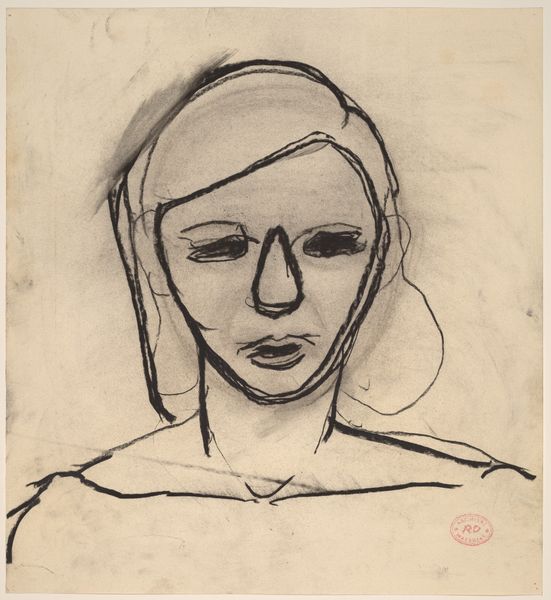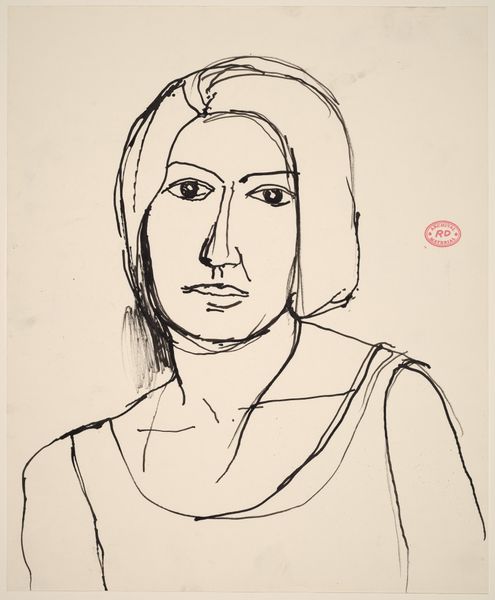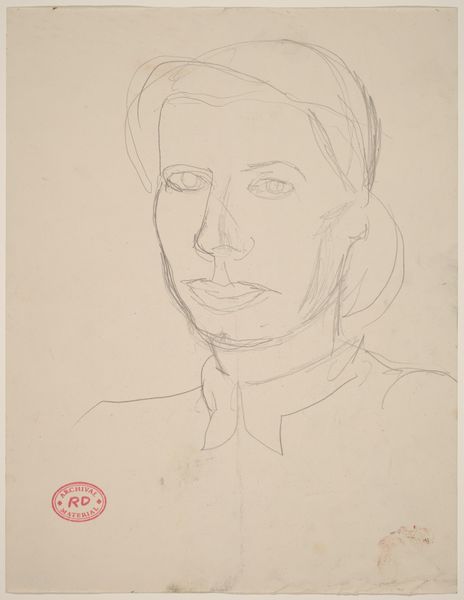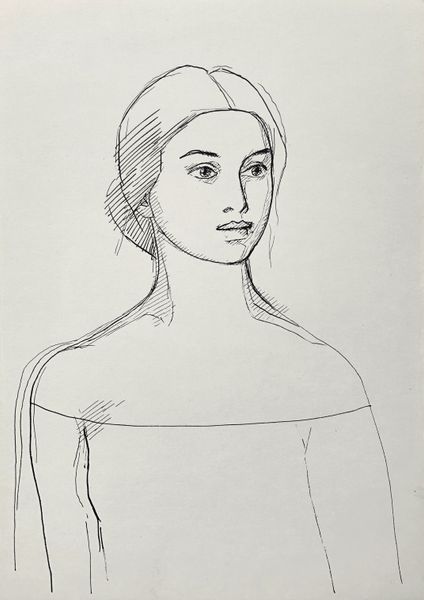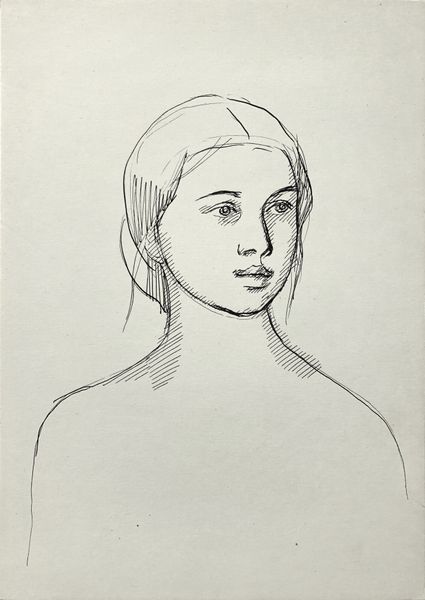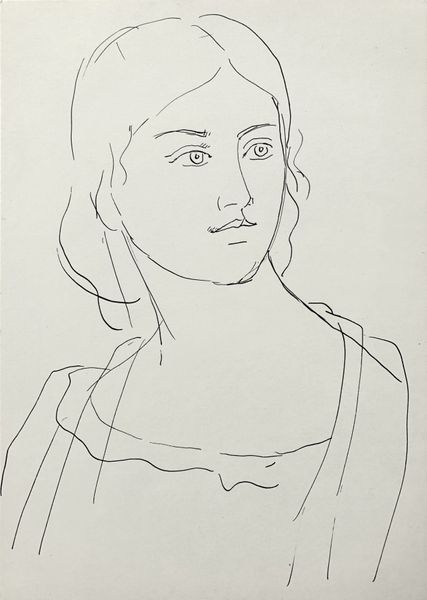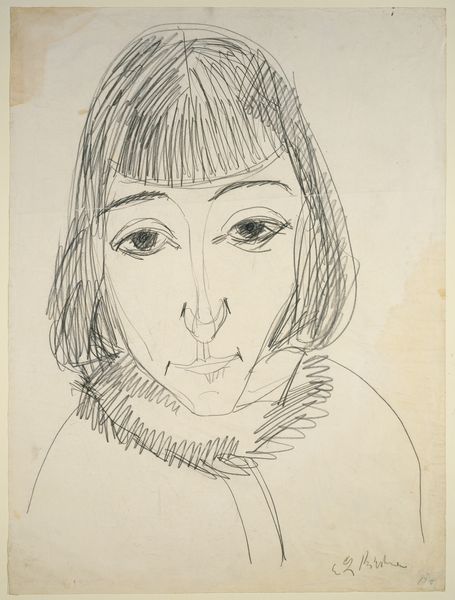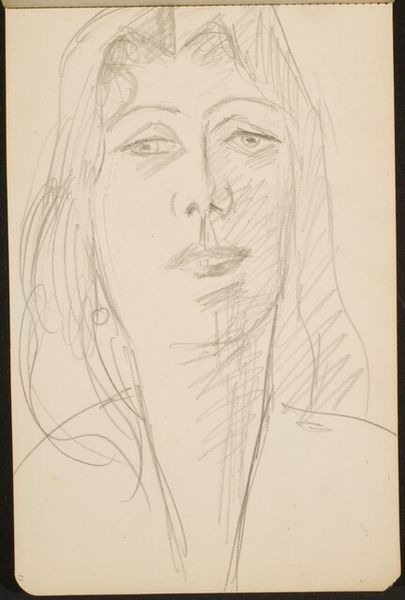![Untitled [head of a woman] by Richard Diebenkorn](/_next/image?url=https%3A%2F%2Fd2w8kbdekdi1gv.cloudfront.net%2FeyJidWNrZXQiOiAiYXJ0ZXJhLWltYWdlcy1idWNrZXQiLCAia2V5IjogImFydHdvcmtzLzY4MDEyOGIxLTQ0YjAtNGRmNi1hOWM2LWQ4ODdlYjJhMzc5Mi82ODAxMjhiMS00NGIwLTRkZjYtYTljNi1kODg3ZWIyYTM3OTJfZnVsbC5qcGciLCAiZWRpdHMiOiB7InJlc2l6ZSI6IHsid2lkdGgiOiAxOTIwLCAiaGVpZ2h0IjogMTkyMCwgImZpdCI6ICJpbnNpZGUifX19&w=3840&q=75)
drawing, pencil
#
portrait
#
abstract-expressionism
#
drawing
#
imaginative character sketch
#
facial expression drawing
#
light pencil work
#
pencil sketch
#
figuration
#
personal sketchbook
#
bay-area-figurative-movement
#
idea generation sketch
#
ink drawing experimentation
#
pen-ink sketch
#
pencil
#
arch
#
sketchbook drawing
#
portrait drawing
Dimensions: overall: 42.9 x 35.2 cm (16 7/8 x 13 7/8 in.)
Copyright: National Gallery of Art: CC0 1.0
Editor: So, this is Richard Diebenkorn's "Untitled [head of a woman]," created sometime between 1955 and 1967, using pencil. It feels... incomplete, like a thought caught mid-stream. How do you interpret this work? Curator: It strikes me as an intimate study, perhaps even a challenge to traditional portraiture. Diebenkorn, known for his abstract expressionism, here seems to be probing the very essence of "woman" rather than depicting a specific individual. The incompleteness you mentioned might be a deliberate choice, reflecting the fragmented nature of identity itself, particularly within the social and political upheavals of the mid-20th century. What do you think the lack of detail communicates? Editor: That's fascinating! I hadn't considered it as a commentary on identity. I was focused on the purely formal aspects. Perhaps the lack of detail allows viewers to project their own experiences and understandings of "womanhood" onto the image, making it a more universal statement? Curator: Precisely! Consider the art world at this time, grappling with feminist critiques and challenging patriarchal representations of women. Could Diebenkorn be consciously subverting the male gaze by presenting an unfinished, less objectified image? What connections might we draw between this sketch and contemporaneous social movements? Editor: Wow, that adds a whole new layer of complexity. Thinking about the Civil Rights movement and second-wave feminism brewing during that period definitely gives the sketch more power. It’s not just a portrait; it’s a reflection of the changing landscape of gender and identity. Curator: Exactly. And understanding those layers allows us to engage more meaningfully with the work and the conversations it sparks. Editor: I definitely see that now. I came in thinking about technique, but I'm leaving with a deeper appreciation for the social commentary. Thank you!
Comments
No comments
Be the first to comment and join the conversation on the ultimate creative platform.
